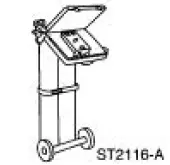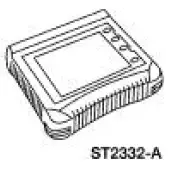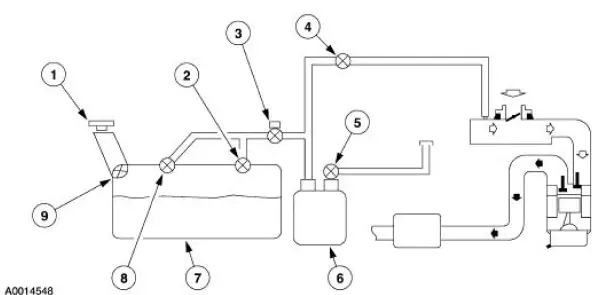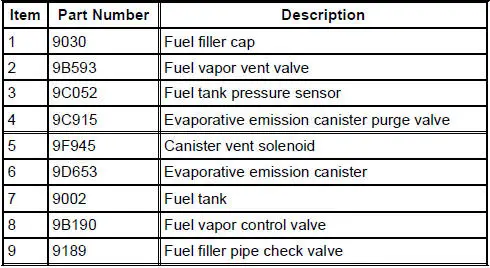Ford Mustang (1999-2004) Service Manual: Evaporative Emissions (Diagnosis and Testing)
Special Tool(s)
 |
Evaporative Emission System Leak Tester 310-F007 (134-00056) or equivalent |
 |
Worldwide Diagnostic System (WDS) 418-F224, New Generation STAR (NGS) Tester 418-F052, or equivalent scan tool |
Evaporative Emission System


 Evaporative Emissions (Description and Operation)
Evaporative Emissions (Description and Operation)
Component Location
The evaporative emission system:
is equipped with an on-board refueling vapor recovery (ORVR) system.
prevents hydrocarbon emissions from reaching the atmosphere.
...
 Principles of Operation
Principles of Operation
Evaporative Emission (EVAP) Canister Purge Valve
The EVAP canister purge valve is controlled by the powertrain control
module (PCM). The EVAP
canister purge valve controls the flow of fuel vapors ...
Other materials:
Wheel Leaks
Material
Item
Specification
Professional Choke and
Linkage Cleaner
F8AZ-19520-AB
WSS-M14P10-
B
Aluminum Wheel Repair
Compound
ESA-M4G280-
A
WARNING: Wheel repairs that use welding or peening are not approved. An
inner tube ...
Charge Air Cooler
Material
Item
Specification
Silicone Gasket and Sealant
F7AZ-19554-EA or equivalent
WSE-M4G323-EA
Removal and Installation
1. Drain the supercharger coolant. For additional information, refer to
Section.
2. Release the fuel pressure. F ...
Rear seats
Rear Seat Entry and Exit
Use the seatback release to fold the
back of the front seat forward for
rear seat access. This release handle
is located on the upper back of the
front seat. The seatback locks
automatically when returned to the
normal position.
Use ...
